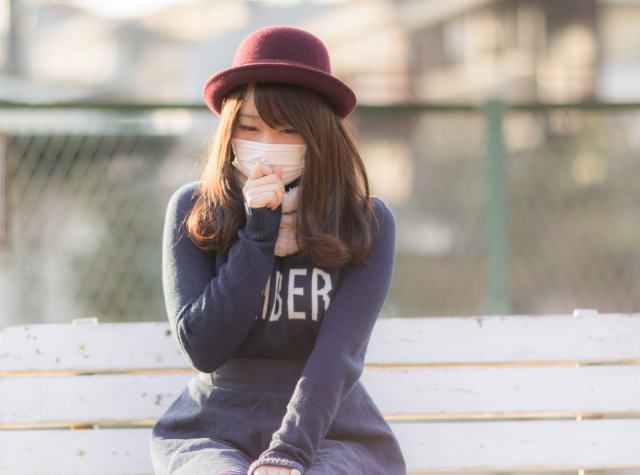
Dress code detail is a waste of time to even discuss, frustrated junior high teacher says.
It’s not uncommon to see people in Japan wearing surgical masks while they’re out and about. While some overseas visitors mistakenly think the practice has something to do with air pollution in Japan’s urban areas, that’s not the case. The primary reasons people in Japan wear masks are to avoid pollen during the country’s severe hay fever season in spring and to prevent catching colds from coworkers or classmates when spending extended periods inside enclosed spaces in the winter.
In a country where workers and students alike are constantly busy, no one wants to have to take a sick day, and so wearing a mask isn’t seen as a sign of hypochondria, but one of admirable dedication to your work or studies. However, Japanese schools, being Japanese schools, can’t help but want to regulate every possible aspect of their students’ conduct, which brings us to this tweet from Japanese middle school teacher @barbeejill3.
“In our afternoon meeting today at work, we spent 30 minutes talking about whether or not students should be allowed to wear masks that are a color other than white…
‘Are light blue or light pink masks too showy and fashionable? Are black ones?’
In the end, the decision was ‘Only white masks will be allowed, because they’re middle school student-like.’
Personally, I don’t care what color mask the students wear, and I wish we’d stop wasting entire half-hours on stupid topics like this.”
This isn’t the first tale of a heavy-handed dress code at a Japanese school, as it comes after other educational institutions dictated the color of students’ underwear and banned “lust-inducing” ponytails. Still, the fact that wearing a mask is widely thought to have health benefits had many online commenters echoing @barbeejill3’s frustration:
“This is so dumb…What’s the baseline for determining if something is ‘middle school student-like?’”
“Isn’t this just a case of middle-aged school employees reacting negatively to colors they’re not used to?”
“Masks are masks.”
“You hear these government studies that say how busy teachers are…so why are they wasting energy checking and enforcing pointless things like this? Shouldn’t they have more faith in their students?”
Then there was the Twitter user who pointed out that even professional-spec masks used by medical professionals are sometimes a color other than white, and it’s not like such vivid hues are leading to improper patient care.
Still, it’s likely that in the school’s opinion, masks, by default, are white. That’s the color most prevalently stocked in stores and worn on the street, and there are indeed some people who choose other colors for aesthetic reasons (which may be why plain white masks were considered the least “attractive” in one survey). From that perspective, maybe it’s not so surprising that the school came to the conclusion “white mask=health equipment, colored mask=fashion accessory,” and since Japanese middle school students aren’t allowed to wear necklaces or earrings, the school wouldn’t want them to wear discretionarily fashionable masks either.
Of course, it’s also worth considering that because students are all facing the same way when seated for class, all they see is the back of their classmates’ heads, which should really limit how much of a distraction a non-white mask could potentially be, since the offending color would be almost entirely invisible during the teacher’s lecture. Unfortunately, the decision is out of @barbeejill3’s hands, but his incognito online griping about it is a reminder that when Japanese teachers enforce baffling regulations, it might not always be by choice.
Source: Twitter/@barbeejill3 via Jin
Top image: Pakutaso
Insert images: Pakutaso
Follow Casey on Twitter, where he’s already stockpiling masks for hay fever season.